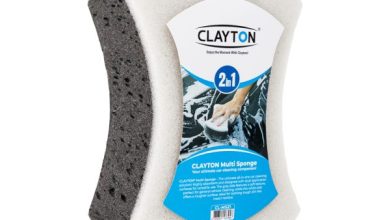The Role of Sealcoating and CDL Drivers

Maintaining road infrastructure is crucial for ensuring safe and efficient transportation. Among the key elements involved in this upkeep are sealcoating and the skilled drivers who operate the heavy machinery necessary for these tasks.
Effective road maintenance not only prolongs the lifespan of roadways but also significantly enhances safety and drivability. Here’s a closer look at why these aspects of road maintenance are so important and the benefits they bring.
Prolonging Road Life with Sealcoating
Sealcoating is a preventive maintenance process that involves applying a protective coating to asphalt-based pavements. This coating serves to protect the asphalt from elements that can cause deterioration, such as water, oils, and UV damage.
Regular sealcoating can double the life of a roadway, delaying the need for more costly repairs like overlays or complete reconstructions. This process is crucial for preserving the asphalt’s integrity and ensuring that roads remain smooth and safe for travel.
Safety Enhancements
A well-maintained road is significantly safer to travel on. Sealcoating improves the surface traction of roads, reducing the likelihood of accidents, especially in wet conditions.
It also enhances visibility of road markings, as the dark surface provides a stark contrast to traffic lines and other signs, making it easier for drivers to follow driving lanes and rules, especially at night.
Economic Benefits
Investing in road maintenance saves money in the long run. By applying sealcoating, municipalities and state agencies can extend the life of roads, thereby deferring expensive repairs and replacements.
This effective cost management is crucial at a time when public and private entities alike are looking to optimize their budgets.
Well-maintained roads also lead to reduced vehicle damage, saving drivers on repair costs associated with poor road conditions like potholes and ruts.
Role of CDL Drivers in Road Maintenance
CDL drivers, or those with a Commercial Driver’s License, play an essential role in the road maintenance process. These drivers operate the heavy machinery required for seal coating, snow removal, and other road preservation techniques.
Their expertise ensures that such operations are carried out safely and effectively, contributing to overall road quality and safety.
The skill and precision of drivers are indispensable, particularly when manoeuvring large vehicles in high-traffic areas or tight spaces, making them critical to any road maintenance crew.
Environmental Considerations
Modern seal coating materials are often more environmentally friendly than those used in the past. Many sealcoats now use water-based emulsions that reduce the release of volatile organic compounds (VOCs) into the atmosphere.
This shift not only helps in protecting the environment but also improves air quality around treated areas. Additionally, well-maintained roads contribute to better fuel efficiency for vehicles by providing smoother surfaces that require less engine effort.
Conclusion
The importance of regular road maintenance cannot be overstated. Implementing routine procedures like seal coating and relying on the skilled services of seasonal-coating immunities can ensure that their roadways remain safe, durable, and visually appealing.
These practices are not only critical for current day-to-day use but also ensure that road infrastructures can serve future generations effectively.
As we continue to rely heavily on road transportation for both personal commutes and commercial logistics, the focus on maintaining these vital assets becomes even more crucial for safety, economy, and environmental sustainability.
Investing in road maintenance saves money in the long run. By applying sealcoating, municipalities and state agencies can extend the life of roads, thereby deferring expensive repairs and replacements.
This effective cost management is crucial at a time when public and private entities alike are looking to optimize their budgets.
Well-maintained roads also lead to reduced vehicle damage, saving drivers on repair costs associated with poor road conditions like potholes and ruts.



